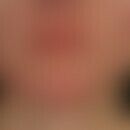Synonym(s)
Amniotic band syndrome; Amniotic rupture sequence
HistoryThis section has been translated automatically.
Portal 1685; Streeter 1930; Neumann 1953
DefinitionThis section has been translated automatically.
Constriction or constriction of limbs (especially fingers or toes) by inelastic, fibrotic, scarred strands of the amniotic sac as a rare phenomenon of numerous underlying diseases (in contrast to the idiopathic Ainhum syndrome). Can lead to spontaneous amputation.
You might also be interested in
Occurrence/EpidemiologyThis section has been translated automatically.
- Diseases with vascular and sensory disorders:
- diabetes mellitus
- Systemic Scleroderma
- Leprosy
- Syphilis III
- Syringomyelia
- Scarring due to trauma(burns, frostbite)
- Diseases associated with hyperkeratosis:
- Keratosis palmoplantaris mutilans
- Olmsted Syndrome
- Keratosis palmoplantaris transgrediens
- Secondary and tertiary stages of framboembolicdisease
- Congenital(Peromellia)
- Caused by artifacts (with hair, threads, etc.)
ClinicThis section has been translated automatically.
No uniform constellation. Various malformations may be present at birth, e.g. constrictions or amputations of fingers, toes or whole extremities. Furthermore rudimentary fingers and toes, syndactylia, clubfoot, cleft lip and jaw. Rarely thorax, head, soft tissue or umbilical cord are affected.
Differential diagnosisThis section has been translated automatically.
Ainhum Syndrome (not congenital!)
TherapyThis section has been translated automatically.
If possible, plastic reconstructive surgical operations.
ProphylaxisThis section has been translated automatically.
Prenatal diagnostics by means of high-resolution ultrasound.
Note(s)This section has been translated automatically.
Ainhum = East African naga language, for sawing or cutting.
LiteratureThis section has been translated automatically.
- Ena P, Pinna A (2003) Lamellar ichthyosis associated with pseudoainhum of the toes and eye changes. Clin Exp Dermatol 28: 493-495
- Neumann A (1953) Pseudoainhum: report of a congenital case involving several fingers and the elft wrist. Arch Dermatol Syphiol 68: 412-427
- Stinco G et al (2003) Complications of pseudoainhum. dermatologist 54: 163-166
- Wollina U et al (2001) Pseudoainhum of all fingers associated with Reynolds' syndrome and breast cancer: report of a case and review of the literature. J Am Acad Dermatol 44: 381-384
Incoming links (3)
Ainhum syndrome; Keratosis palmoplantaris transgrediens et progrediens with mutations in slurp1; Simonartian skeins;Outgoing links (11)
Ainhum syndrome; Frostbite; Incineration; Keratosis palmoplantaris transgrediens et progrediens with mutations in slurp1; Leprosy (overview); Loricrin keratoderm; Olmsted syndrome; Peromellia; Scleroderma systemic; Syphilis (overview); ... Show allDisclaimer
Please ask your physician for a reliable diagnosis. This website is only meant as a reference.




